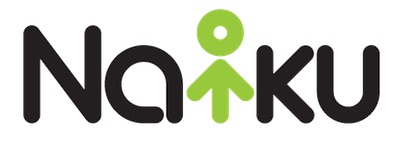Teachers and readers of this blog are well aware of the power of formative assessment. As Black and Wiliam have summarized, formative assessment is one of the most effective instructional strategies ever.
Popham (2009) provides this clear and concise definition of formative assessment:
“Formative assessment is not a test. Rather, it is an ongoing process in which teachers use test-elicited evidence to adjust their instruction or students use it to adjust their learning tactics.”
I like this definition of formative assessment because it reminds us that for formative assessment to be effective, teachers AND students both should be active participants. Teachers should use the evidence collected from assessments to adjust their instruction AND students should use the same evidence to adjust their learning tactics. In fact, Popham outlines four levels of formative assessment:
Level 1: Teacher’s Instructional Adjustments
At this first level, teachers use information about their students gathered from assessments when deciding to make adjustments to their current or immediately upcoming instructional activities.
Level 2: Student’s Learning Tactic Adjustments
At the second level, students use that same assessment-elicited evidence to decide whether to adjust how they are trying to learn something.
Level 3: Classroom Climate Shift
When Level 1 and Level 2 co-exist in the classroom, we see a transformation to a classroom that focuses on improving the quality of instruction and learning.
Level 4: Schoolwide Implementation
At this level, formative assessment is promoted at the school or district level through professional development and/or professional or teacher learning communities.
What’s not readily known, and Popham (2011) actually just mentions this only in passing in his textbook Classroom Assessment, What Teachers Need to Know (a textbook that I often use when I teach a class on Assessment Theory and Practice to teachers), is that most teachers in North America put greater emphasis on Level 1 while teachers in other parts of the world are more focused on Level 2. That is, teachers in this part of the world, when they use formative assessment to enhance their instruction, focus on using assessment results to adjust their own instruction, whereas other teachers focus on helping students take greater responsibility for their own learning.
Did We Just Forget the Students?
This is an important reminder that instruction and learning go hand-in-hand. Both must co-exist. And both must be emphasized. We as teachers must do our best to be superb teachers. Students must also do their best to be superb learners. When students are not asked or expected to do their share of the equation, instruction, no matter how superb, cannot be effective.
That is why when I built Naiku, I didn’t just build an online testing platform. Naiku isn’t just a place to take tests online. It’s more than moving the paper-and-pencil tests or the bubble sheets to computers and tablets. It’s about believing in the testing effect (where testing is more than a testing event, it actually can be a learning event) and about engaging students in testing and learning.
These principles of Level 2 formative assessment manifest in the following ways in Naiku:
- Goal Setting: Students are encouraged to set goals in each class. These can be done daily, weekly, or monthly. The key is for students to revisit the goals and measure their progress towards the them.
- Prediction: As students take a test, for each question they are encouraged to predict their performance by rating how confident they are in their answer.
- Justification: In addition to predicting their performance, students are encouraged to provide a justification for their answer. We call this “tell-me-more”; this is an opportunity for students to tell teachers more what what they are thinking.
- Reflection: After the test is immediately scored and students can see what they got right or wrong, they are encouraged to reflect on why they answered the question correctly or incorrectly. Students choose from a set of “reflection tags”, ranging from “I know and understand” to “I don’t understand this at all”.
- Journaling: In addition to choosing a reflection tag, students are encouraged to journal about that reflection. This is an opportunity to for students to think more deeply about each reflection.
These practices in Naiku are part of what we call “Better Assessment” practices. They not only encourage students to take greater control of their own learning, they further develop their metacognitive skills. For more on the importance of metacognition in student learning, check out this previous blog post.
We Didn’t Forget the Students
At Naiku, we surely have not forgotten the students. We as teachers must continually work to adapt and improve our instruction. At the same time, we must strive to take it to the next level and encourage our students to adapt and take ownership of their own learning.
If you believe in these principles and would like to include them in your classroom assessment practice, I encourage you to sign up for a Naiku 30-Day Free Trial today.




